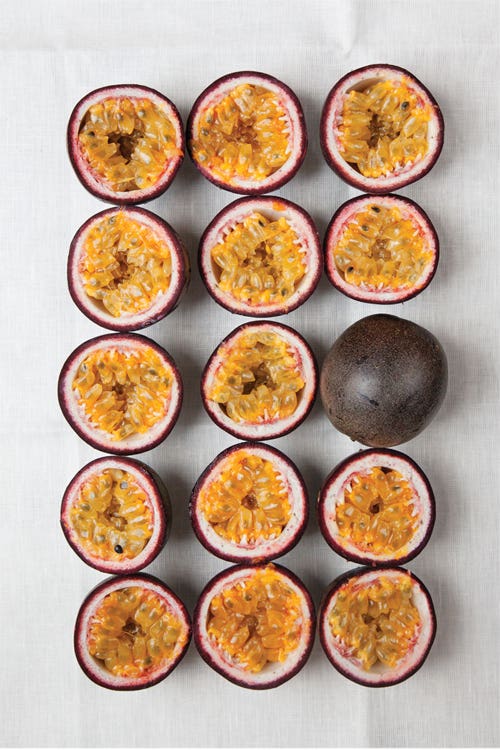
Though the SAVEUR kitchen was initially unsure how to work with passion fruit as an ingredient, as we cooked through the recipes for our story on Buenos Aires we quickly came to love the fruit's versatility. Cut in half, the firm outer shell yields a cluster of membranes, known as arils, filled with a pleasingly sour, fragrant juice and crunchy black seeds. This bright orange pulp is delicious when eaten raw right out of the fruit, or spooned over a scoop of vanilla ice cream for a pop of texture and tang. And the fruit's musky but refreshing juice maintains its delicate floral aromas when heated. This means the passion fruit's complex tropical notes are just as vibrant fresh as they are in cooked sauces and syrups, like the one drizzled over the delicate custard in our Buenos Aires story. Two kinds of passion fruits grow on the Passiflora edulis, a sun-loving vine with psychedelic purple flowers native to tropical South America. You can differentiate the grapefruit-sized yellow passion fruit from its purple sibling by a shiny rind, brown seeds, and intense flavor. Though we prefer working with the purple passion fruit, which has a gentler scent and flavor, the same shopping strategy applies to both varieties. A taut skin points to sour, underripe pulp (wrap the fruits in newspaper to speed up the ripening process, and don't store them in the fridge), while shriveled fruits indicate the flesh inside is overripe and may actually taste fermented. For the most aromatic fruit, look for spheres with just slightly wrinkled skins, and always choose the heaviest among them, which tend to be loaded with ripe pulp.
Box of 8 passion fruits, price varies by season, at Melissa's Produce
Keep Reading
Continue to Next Story










